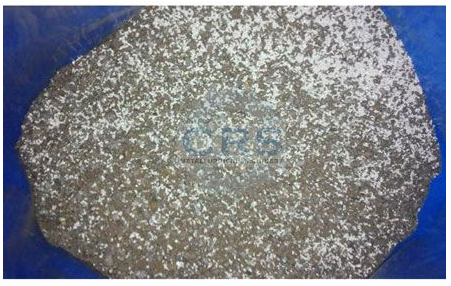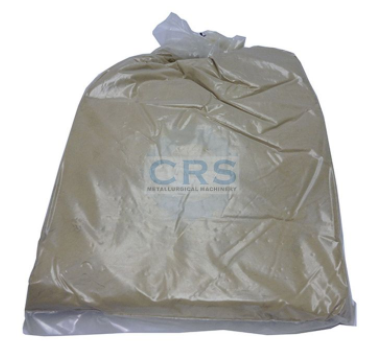How to Use Exothermic Welding?
Scope:
Exothermic welding, also known as exothermic bonding, thermite welding (TW), and thermit welding, is a welding technique that permanently joins conductors using molten metal. An exothermic reaction of a thermite composition heats the metal, and no external source of heat or current is required. An aluminothermic reaction between aluminium powder and metal oxide releases heat.
Exothermic welding, also known as AxiWeld, is a simple, cost-effective, self-contained, and portable method of producing high-quality, permanent metal-to-metal connections. The AxiWeld product range is built and tested in conformity with IEEE 837.
Thermite Welding Powder
The objective of Exothermic Welding:
A connection between powdered copper compound and aluminium allows the superheated molten copper alloy to develop around the conductors for linking. Because of the high copper content, the final connections are electrically conductive and have excellent corrosion resistance.
Stainless steel, brass, copper, bronze, galvanised steel, steel rail, cast iron, and copper-clad steel are a few materials that can be welded using the exothermic welding technique.
3Cu2O +2Al → 6Cu + Al2O3 + Heat
Copper Oxide + Aluminum → Copper + Aluminum Oxide (Slag) + Heat
Reaction Temperature nearly 2500°C (4500°F)
Because aluminium is highly reactive, it reduces the oxide of another metal, most often iron oxide, in exothermic welding.
Other metal oxides such as chromium oxide can be employed to create the provided metal in elemental form. Copper thermite, made from copper oxide, make electric joints.
The Exothermic Welding Process:
It is a welding procedure for permanently attaching two electrical conductors that use a superheated copper alloy. For heating the copper, the procedure uses an exothermic reaction of a copper thermite composition, which does not require any external heat or electricity. An aluminothermic reaction occurs when aluminium powder and metal oxide react chemically to produce heat.
Depending on the metal oxide utilised, the reaction reaches high temperatures. The reactants are in the form of powders and, the reaction is ignited with a flint lighter spark. However, because the activation energy for this reaction is so high, it should start by using either a "booster" substance like powdered magnesium metal or an extremely hot flame source. It creates aluminium oxide slag.
When welding copper conductors, a semi-permanent graphite crucible mould is used, in which molten copper created by the reaction flows through the mould and conductors to be welded, generating an electrically conductive weld.
The mould is either broken off or left in place once the copper cools. Hand-held graphite crucibles are another option. These crucibles have several advantages, including portability, low cost (due to their ability to be reused), and versatility, especially in field applications. The resulting weld has more mechanical strength and corrosion resistance than other welds. It's stable when subjected to repeated short-circuit pulses, and it also doesn't suffer from increased electrical resistance with time.
However, the procedure is more expensive than other welding methods, it requires a constant supply of changeable mould, lacks reproducibility, and can be disturbed by wet or inclement weather (when performed outdoors).
Various tools required for Exothermic Welding Process:
Mould: Every graphite mould creates a different sort of joint.
Weld Powder: Makes high-quality electrical connections between metals (Copper to Copper or Copper to Steel).
Ignition Powder: Ignition Powder supplies the weld powder with an initial flame and gets scattered on top of the weld powder.
Steel Retaining Disc: The disc serves as a timer for the welding powder to reach the right temperature. Steel Disc contains the exothermic reaction to the upper crucible of the mould until it is complete and ready for welding.
Flint Gun / Igniter: Used to start an exothermic reaction by igniting it.
Hand Clamp: Fastening the two/three-part mould together (or clamping the mould onto the surface to which a connection is to be made)
Mould Brush: This tool cleans the scrap from the mould after the weld joints are complete.
Hand Gloves: When working on an exothermic reaction, wear high-temperature resistant gloves for safety.
Luting Sand for Orbital Welding
Various Features of Exothermic Welding Process:
- Its electrical conductivity is superior as compared to other conductors.
- It is resistant to galvanic coupling and does not get corroded or degrade with time.
- It can survive electrical discharges on multiple occasions.
- Its resistance never increases.
- Its mechanical and squeezing resistance is greater than that of the conductors.
- It provides permanent welding and a low-resistance connection, both necessary for long-lasting and reliable earthing outcomes.
- It ensures common connections, including copper cables, welding tapes, brass, stainless steel, and copper-coated steel earth rods.
Step by Step for Exothermic Welding Process:
STEP 1: When dealing with exothermic welding products, always use proper safety glasses and gloves.
STEP 2: Gather all necessary materials, equipment, and accessories for the connection you're making. A conventional Weld system consists of graphite mould, handle clamp, welding material, natural bristle brush for mould cleaning, wire brush for cleaning/preparing conductors, flint igniter, and propane torch. Check if the graphite mould is worn or cracked, as this could lead to molten weld metal leaking.
STEP 3: Insert the handle clamp into the pre-drilled holes, ensuring that the thumbscrews are oriented correctly.
STEP 4: Tighten the thumbscrews on the clamps to the mould.
STEP 5: Tighten the grips to secure the mould. Tighten or loosen the handle clamp as needed.
STEP 8: Use the metallic disc to block the tap hole.
STEP 9: Empty the welding mixture package's contents.
STEP 10: Pour half of the starting powder over the Exothermic Weld Powder (do not mix, but scatter), close the mould mouth, and then sprinkle the other half of the starting powder on the mould mouth at the opening on the top of the Mould Mouth.
STEP 11: Using the flint Igniter, ignite the starting powder, stretched on the top/side of the mould.
STEP 12: Once the reaction starts, it will take 3-4 seconds to complete, during which you should keep your distance from the mould.
Advantages of Exothermic Welding Process:
a) Due to the fused connection, the resistance will gradually decrease.
b) Due to a low sensitivity to corrosion, it will not deteriorate with age.
c) The life duration of the conductors it joins is greater than the conductors themselves.
d) Because of the molecular connection, any chance of loosening gets eliminated.
e) Will not be harmed by faulty currents on several occasions.
f) The earth path resistance is as minimal as feasible.
g) Visual examination can check for quality.
h) With little training and protective needs, this product is safe for use.
Applications of Exothermic Welding Process:
Because of the benefits of exothermic welding and electrical connectors, this type of welding is implemented in many electrical protection systems. It keeps connections stable and grounded.
Exothermic connections are utilised in a range of industries because they reduce electrical resistance, reduce oxidation, and eliminate the problem of vibration related to connection weakening.
They are used in electronics and electrical wiring, ranging from the substation and power plant earthing systems to telecommunications devices. Cathodic protection systems and lightning protection both involve exothermic welding.
Exothermic welding is commonly employed to join railroad rails. Due to the thickness of the material and isolated places where these welds must be done, it can be challenging to weld using any other method.
The Exothermic Welding Materials factory from China provides Exothermic Welding Materials for railway welding construction teams, railway contractors, railway procurement departments, and railway supply trading companies.
Related:



评论
发表评论